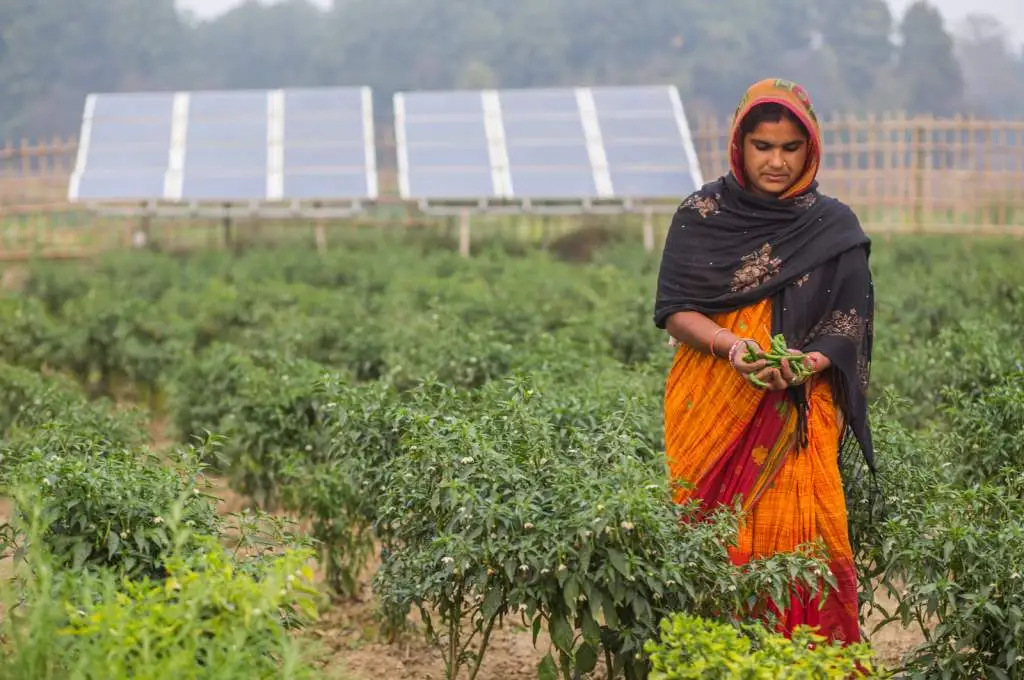In recent years, global climate change goals have been focused on achieving the ‘net-zero’ target. This would require countries to move away from fossil fuel energy sources, such as coal and gas, to cleaner sources of energy, such as solar and wind. In short, in order to tackle the climate crisis, countries will have to radically change how their economies operate.
While this calls for action at the national and global level, individual action is crucial if we want to achieve any of our climate goals. In order to effectively achieve long-term climate goals such as decarbonisation, we need people to adopt low-carbon lifestyles at an individual level. This shift requires a change in what are often deeply entrenched behaviours (how you travel to work, the food you buy, and more) that impact everyday lives.
But what will convince you to give up the comfort of your car for public transport, or to invest in (more expensive) energy-efficient appliances when your current ones work fine? And even if you are convinced, what will push you to convert your intent into action?
This article explores what these changes in behaviour will take, what the barriers are, and how policymakers can use them to better inform climate communication and policies.
Barriers to climate-related behaviour change
It is important to note that for any behaviour to change, we need three things to come together. First, we need motivation (‘I want to do the behaviour’). Secondly, we need ability (‘I can do the behaviour’), which means the behaviour is easy in terms of time, resources, cognitive load and decision-making. And lastly, we need triggers or cues in our physical, digital, and social environment that enable us to engage in the behaviour, convert our intent into action, and sustain it.
1. Motivation
From a behavioural change lens, motivation is key. Motivation of an individual goes beyond knowledge and awareness. It is impacted by several factors: an individual’s goals and how they are being met by behaviour; their beliefs about this behaviour; and what others around them are doing, that is, social norms.
When it comes to goals, people tend to be motivated by ones that are more immediate and personal. Here is where climate-related behaviours have a significant disadvantage: climate-related goals are neither personal nor immediate; they are intangible and long-term. Often when we promote climate-related behaviours, we frame them in terms of goals such as ‘saving the planet’, which may not be motivating at an individual level. In fact, the link between climate-friendly behaviours and how they benefit the environment in the long run may not be intuitive either.
Let’s look at the example of waste segregation. We’re told that segregating waste is good for the environment. However, the causal linkage between the two is not very clear. Instead, we’ve found that more immediate goals, such as making your city cleaner and less odorous, reducing vector-borne diseases, or being seen as a responsible and active citizen can be better motivators for waste segregation. The more immediate we can make the goal, the more likely the behaviour change is.
We all also suffer from present bias, where we overvalue the present and undervalue the future. This acts as a barrier when it comes to adopting climate-related behaviours as many of them require an upfront cost for a long-term gain—something that we as humans find very difficult to do. A simple example of this would be the high cost of low-carbon solutions such as electric vehicles (EVs) and rooftop solar panels. While households are likely to achieve significant cost savings by using such technologies, these savings accrue over time. However, the purchase expense is immediate and the upfront cost feels more significant than the long-term benefits. Therefore, for people to change their behaviour, overcoming present bias is crucial.

2. Ability
When it comes to climate change, individual action cannot take place in isolation. The infrastructure to enable this behaviour change is equally important. Going back to the example of EVs, say an individual is ready to make the switch and wants to buy one. However, they find that there are no EVs available. When they go to the showroom, they cannot take it for a test drive or there’s no charging infrastructure close to their office or home. This makes behavioural change all the more difficult because when we add more steps to the behaviour, it becomes more difficult for the change to take place.
A lot of the climate behaviours today are not easy. For example, you may want to purchase rooftop solar panels and install them in your house to reduce energy-related emissions. Unfortunately, you’re likely to experience something known as the sludge effect, where administrative and process obstacles, that is, sludge, make achieving your goal difficult. The process for purchasing and installing solar panels is very tedious in many states—it involves finding a credible vendor, conducting an audit in your home, getting approval from local authorities, and then finally getting the panel installed. This process can be extremely lengthy and challenging, especially if you’re trying to do this on your own, and may dissuade you from adopting this solution.
Similarly, you may be motivated to segregate your waste but you struggle with the terminology the municipality uses to do so correctly. You’ve been told to segregate your ‘wet’ and ‘dry’ waste, but what about a juice box or carton of milk, where does that go?
Suddenly, climate action begins to seem difficult; there’s a significant cognitive load that must be overcome to be able to adopt climate-friendly behaviours.
This is where policy has a huge role to play—it can make the shift easier from a process and decision-making point of view. Ideally, processes should aim to reduce the reluctance in taking climate action. This could include creating a simpler process purchasing and installing rooftop solar; reducing the jargon and technicality around waste segregation, potentially by creating capacity and awareness through infographics, videos, or pamphlets; or creating and enforcing labelling standards so consumers can understand where their food has come from.
3. Triggers
Even when motivation and ability are present, we may need cues in our environment to help us make the leap. This is where triggers come in. To successfully support climate-related behaviour change, we need to invest in creating more behavioural triggers.
These behavioural triggers can take various forms. There could be physical triggers in the environment, such as creating standardised and visible designs for EV chargers in the public realm. Currently, many potential EV customers have concerns about being able to charge their vehicles in and around cities—they don’t know the extent of charging infrastructure available because it’s easy to miss. Signage is also limited and unstandardised, both on wayfinding apps such as Google Maps and in the physical space. By creating triggers like standardising the design of chargers—for example, painting all EV charging spots green, and reinforcing their presence—we can help reduce the concerns customers have about public charging and help improve the uptake of EVs.
There could also be digital triggers, such as real-time feedback on our phones that track our carbon footprint, or even social triggers, where households compare their electricity consumption with their neighbours and strive to reduce it and simultaneously achieve climate action.
Creating enablers in the social, physical, and digital environment—which prevents individuals from inertia, forgetfulness, and procrastination—is the missing link in making a choice the default behaviour. This is crucial if we want to create sustained behavioural change in the context of climate action.
What steps can we take today?
For policymakers, it is necessary to understand the barriers that individuals face in order to identify how existing or new policies can lead to climate action that result in sustained behaviour change. While the area is still developing in terms of research, here are some suggestions that can help for easier adoption of climate-friendly behaviours:
Make change easier
Policymakers need to ensure that they make the behaviour change as simple as they possibly can. This includes simplifying processes (for example, for purchase of solar rooftops); using easy-to-understand language/terminology (for example, for waste segregation); and making behaviours less time- and resource-consuming (for example, for EV charging).
Make change attractive
To make the benefits of climate action more attractive, they need to be linked to personal and immediate goals. Messaging and communication around climate change cannot just focus on the larger climate- or environment-related goals. While these are important, they need to be linked to goals that focus on cost savings from buying energy-efficient appliances, health benefits from waste segregation, status signalling from switching to EVs,time savings from using public transport, and so on.
Make change social
Any behaviour change is more likely to happen if we think people in our networks are also doing it. Through our work we have discovered that people are more likely to purchase an EV when they have friends or family members who have already bought one. Studies have also shown that by providing information on how a household’s consumption compares to its neighbours’, one can nudge people into reducing electricity consumption.
Make change timely
Another tactic to improve the adoption of climate-friendly behaviours is to ensure that the interventions to enable change are made at the right time. For example, our project has found that people are more likely to purchase rooftop solar panels when they’re building or redoing their houses. Similarly, people are more likely to buy an EV when they’ve just installed rooftop solar panels. By promoting these choices at the right time, we can improve the uptake of low-carbon technologies.
While behaviour change and individual action are essential for making progress on climate ambitions, we can’t ignore the importance of policy and structural change. We urgently need better incentives for EVs, simpler rooftop solar and waste segregation policies, more accessible and safe public transportation, and continuous and well-lit walking and cycling infrastructure to help people make low-carbon lifestyles choices. Infrastructure and climate-friendly policies can help create enabling conditions to facilitate individual action and support behaviour change towards sustainable and climate-friendly decisions.
—
Know more
- Stay updated on the latest behaviour science and climate action research here.
- Watch this video to learn more about applying a behavioural lens to climate issues.
- Listen to this podcast to learn how climate communication can enable individual climate action.
Do more
- Read this report to learn about different climate behaviours that you can adopt.






